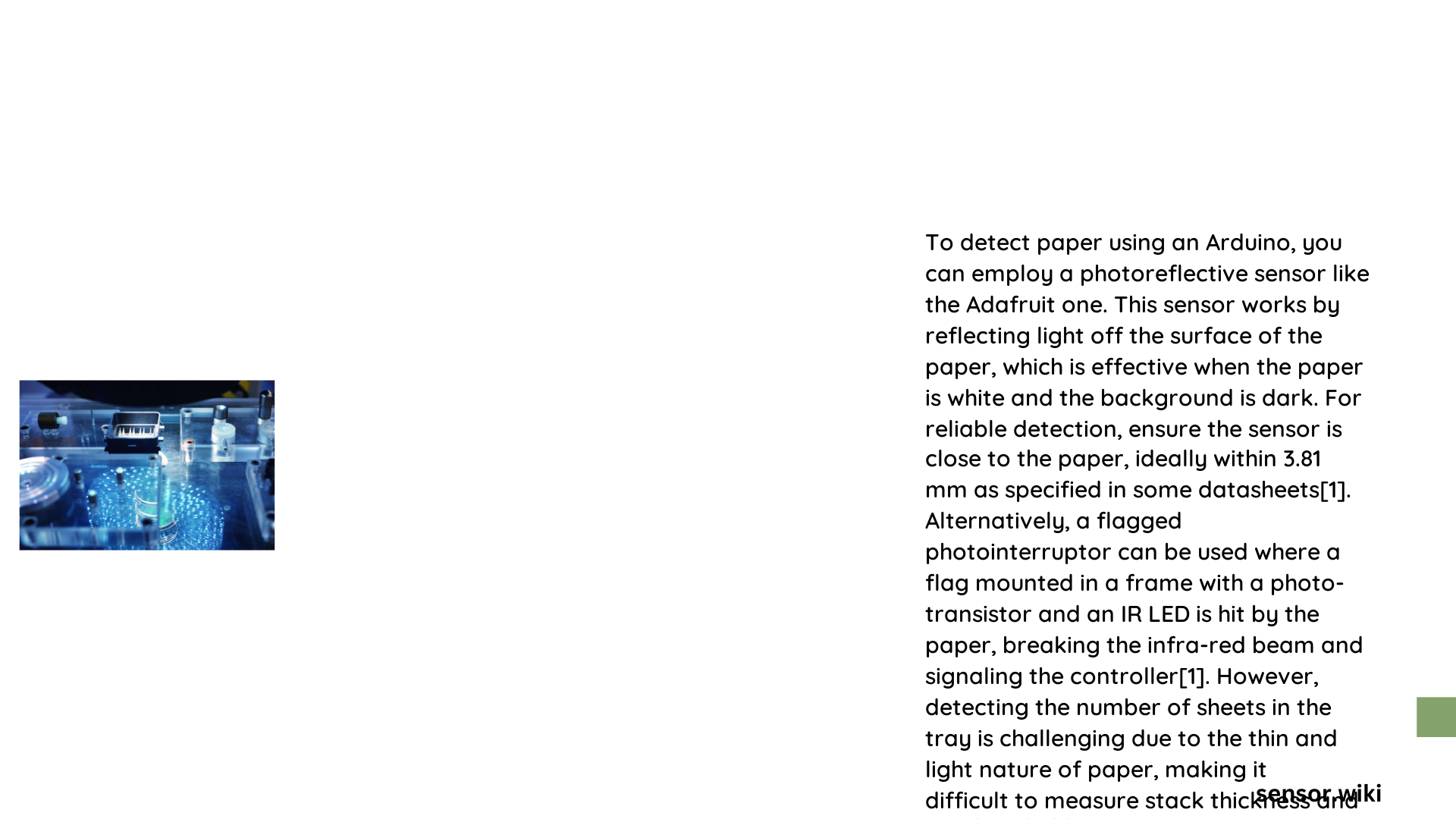Paper detection sensors are critical electronic components that enable precise paper tracking and management in various automated systems. These sophisticated sensors utilize infrared, optical, and reflective technologies to detect paper presence, movement, and positioning with remarkable accuracy. Arduino microcontrollers provide an ideal platform for integrating these sensors, offering flexible programming and robust signal processing capabilities for diverse industrial and technological applications.
What Are Paper Detection Sensors?
Paper detection sensors are specialized electronic devices designed to identify and track paper movement, presence, and positioning using various detection mechanisms. These sensors typically employ technologies such as:
- Infrared Reflection Sensors
- Break Beam Sensors
- Optical Interruption Sensors
- Reflective Photoelectric Sensors
How Do Paper Detection Sensors Work with Arduino?
Paper detection sensors interact with Arduino through digital or analog input pins, providing real-time signal information about paper presence. The basic working principle involves:
- Sensor Emission: Emitting light or infrared signals
- Signal Reflection/Interruption
- Signal Processing by Arduino
- Trigger Specific Actions
Detailed Sensor Specifications

| Sensor Type | Detection Range | Operating Voltage | Response Time |
|---|---|---|---|
| Reflective IR | 3.81 mm | 3.3V – 5V | 1-5 milliseconds |
| Break Beam | 5-20 cm | 3.3V – 5V | 0.5-2 milliseconds |
| Optical Interrupt | 2-10 cm | 3.3V – 5V | 0.3-1 milliseconds |
Key Considerations for Paper Detection Sensors
What Factors Affect Sensor Performance?
Several critical factors influence paper detection sensor performance:
- Paper Color and Reflectivity
- Ambient Light Conditions
- Sensor Positioning
- Environmental Temperature
- Dust and Debris Accumulation
How to Choose the Right Sensor?
When selecting a paper detection sensor for Arduino projects, consider:
- Detection Range Requirements
- Paper Type and Thickness
- Environmental Constraints
- Budget Limitations
- Precision Needed
Arduino Integration Techniques
What Programming Approaches Work Best?
Arduino provides multiple approaches for integrating paper detection sensors:
// Sample Reflective IR Sensor Code
const int sensorPin = 2;
void setup() {
pinMode(sensorPin, INPUT);
}
void loop() {
int paperDetected = digitalRead(sensorPin);
if(paperDetected == LOW) {
// Paper Detected
triggerAction();
}
}
Practical Applications
Paper detection sensors find applications in:
- Printer Mechanisms
- Document Handling Systems
- Automated Sorting Machines
- Robotic Paper Manipulation
- Quality Control Systems
Cost and Availability
What Are Sensor Pricing Ranges?
- Basic Reflective Sensors: $5 – $10
- Advanced Break Beam Sensors: $10 – $20
- Specialized Optical Sensors: $15 – $30
Troubleshooting Common Issues
- Calibrate Sensor Thresholds
- Shield from Ambient Light
- Clean Sensor Surfaces Regularly
- Use Appropriate Voltage Regulation
Recommended Arduino Boards
- Arduino Uno
- Arduino Nano
- Arduino Mega
- ESP32 Development Board
Conclusion
Paper detection sensors represent sophisticated technological solutions for precise paper tracking, offering remarkable flexibility and accuracy when integrated with Arduino platforms.
